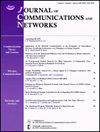基于格的群签名方案及其在IoMT中的应用
IF 3.2
3区 计算机科学
Q2 COMPUTER SCIENCE, INFORMATION SYSTEMS
引用次数: 0
摘要
医疗物联网(Internet of medical things, IoMT)是物联网在医疗行业的应用,实现了对患者医疗数据的存储和处理。由于医疗数据的敏感性和保密性,医疗物联网的安全要求必须同时保护数据隐私和患者机密。群签名方案可以同时满足这些要求。作为基本的加密工具,它们允许对消息进行匿名签名。本文以中国剩余定理为基础,结合陷阱采样、正交采样和高斯样本预像等技术,构造了一种基于格的群签名方案。与现有的群签名方案相比,该方案在添加或删除成员时不需要修改已经生成的密钥,从而可以快速添加或删除组成员。安全性分析表明,该方案具有匿名性、不可伪造性和抗合谋攻击能力。最后,将该方案应用于医疗物联网的模型构建中,以保证私有数据的安全性和完整性。本文章由计算机程序翻译,如有差异,请以英文原文为准。
Lattice-based group signature scheme and its application in IoMT
Internet of medical things (IoMT) is the application of the Internet of things in the medical industry, which enables the storage and processing of patients' medical data. Due to the sensitivity and confidentiality of medical data, security requirements for medical IoT must simultaneously protect data privacy and patient confidentiality. Group signature schemes can satisfy these requirements simultaneously. Serving as a fundamental cryptographic tool, they allow for the anonymous signing of messages. In this paper, based on the Chinese remainder theorem (CRT) and combined with techniques such as trap sampling, orthogonal sampling, and Gaussian sample preimage, a lattice-based group signature scheme is constructed. Compared with existing group signature schemes, this scheme does not require modification of already generated keys when adding or removing members, thus enabling rapid addition or removal of group members. Security analysis demonstrates that this scheme meets anonymity, unforgeability, and resistance against collusion attacks. Finally, the scheme is applied to the model construction of medical IoT to ensure the security and integrity of private data.
求助全文
通过发布文献求助,成功后即可免费获取论文全文。
去求助
来源期刊
CiteScore
6.60
自引率
5.60%
发文量
66
审稿时长
14.4 months
期刊介绍:
The JOURNAL OF COMMUNICATIONS AND NETWORKS is published six times per year, and is committed to publishing high-quality papers that advance the state-of-the-art and practical applications of communications and information networks. Theoretical research contributions presenting new techniques, concepts, or analyses, applied contributions reporting on experiences and experiments, and tutorial expositions of permanent reference value are welcome. The subjects covered by this journal include all topics in communication theory and techniques, communication systems, and information networks. COMMUNICATION THEORY AND SYSTEMS WIRELESS COMMUNICATIONS NETWORKS AND SERVICES.

 求助内容:
求助内容: 应助结果提醒方式:
应助结果提醒方式:


